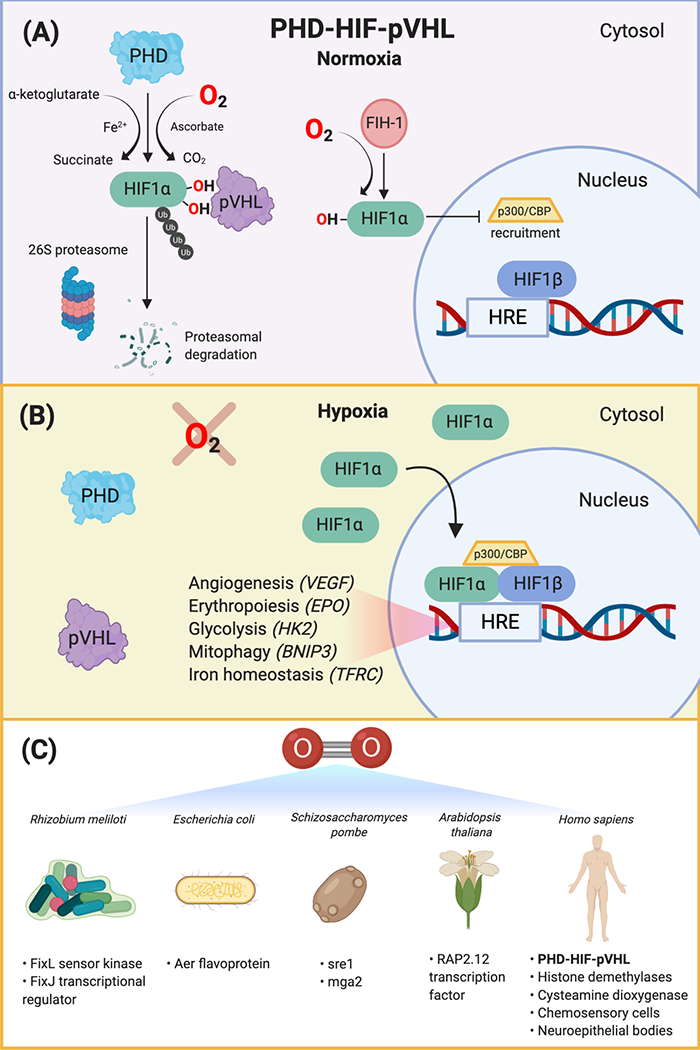Figure 1. Cellular Oxygen Sensors.

(A)The PHD-HIF-pVHL oxygen sensing pathway is conserved across all metazoans. Under normoxic conditions, PHD proteins hydroxylate the HIF-α transcription factor at two highly-conserved prolyl residues on the oxygen-dependent degradation domain, leading to its recognition by the tumor suppressor, pVHL. pVHL is the recognition component of a ubiquitin E3 ligase complex that polyubiquitylates HIF-α, marking it for proteasomal degradation by the 26S proteasome. Factor inhibiting HIF1 (FIH-1) is an asparagine hydroxylase that hydroxylates HIF in normoxia and prevents recruitment of the transcription coactivators, p300 and CBP. (B) Under hypoxic conditions, HIF-α is not degraded. HIF-α accumulates in the cytosol and translocates to the nucleus, where it binds to the conserved HRE sequence on DNA, its constitutively active and oxygen-insensitive partner, HIF-1β (ARNT), and the transcription coactivators, p300 and CBP. This complex transcriptionally activates hundreds of genes that allow cells to adapt to hypoxic environments, including VEGF, EPO, HK2, BNIP3, and TFRC. (C) There are various oxygen sensors across organisms, including Gram-negative bacteria (Rhizobium meliloti and Escherichia coli), fission yeast (Schizosaccharomyces pombe), plants (Arabidopsis thaliana), and metazoans (e.g., Homo sapiens). These systems, including the FixL sensor kinase and FixJ transcriptional response regulator, Aer flavoprotein, sre1 and mga2 transcriptional regulators, RAP2.12 transcription factor, histone demethylases, chemosensory cells in the carotid body, and intrapulmonary neuroepithelial bodies, transduce oxygen-dependent reactions into a signaling cascade that result in adaptive responses in hypoxic conditions. Abbreviations: BNIP3, BCL2 interacting protein 3; CBP, cyclic-AMP response element binding protein (CREB) binding protein; EPO, erythropoietin; TFRC, transferrin receptor; HIF, hypoxia-inducible factor; HK2, hexokinase-2, HRE, hypoxia response element; PHD, prolyl hydroxylase domain; pVHL, von-Hippel-Lindau tumor suppressor protein; VEGF, vascular endothelial growth factor.
